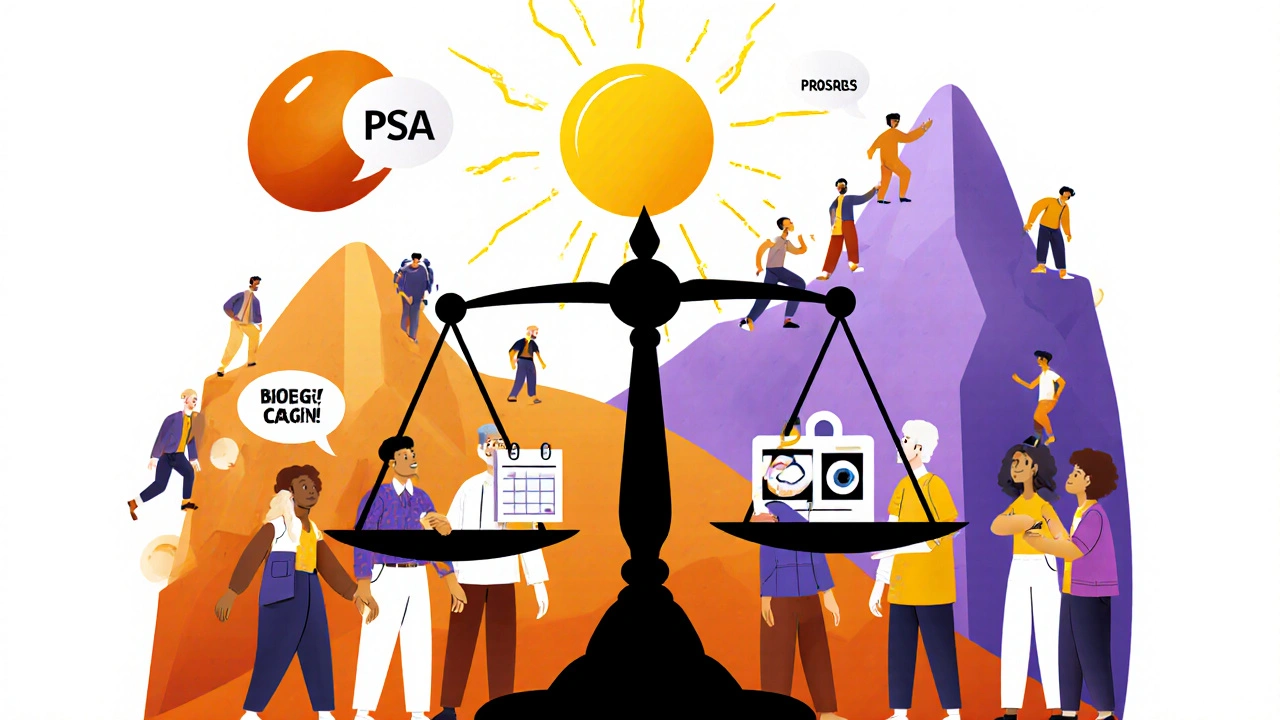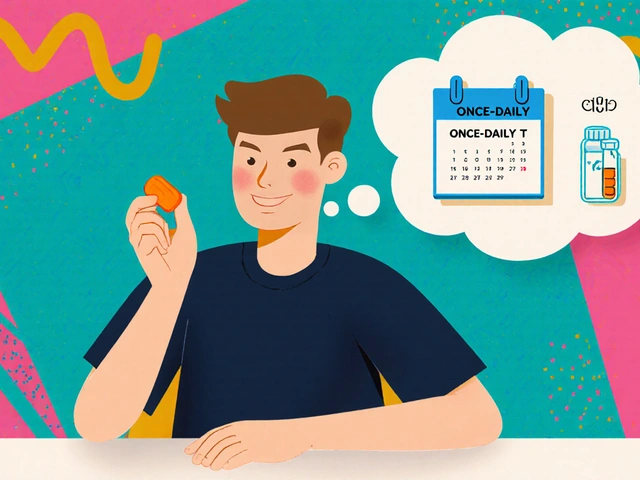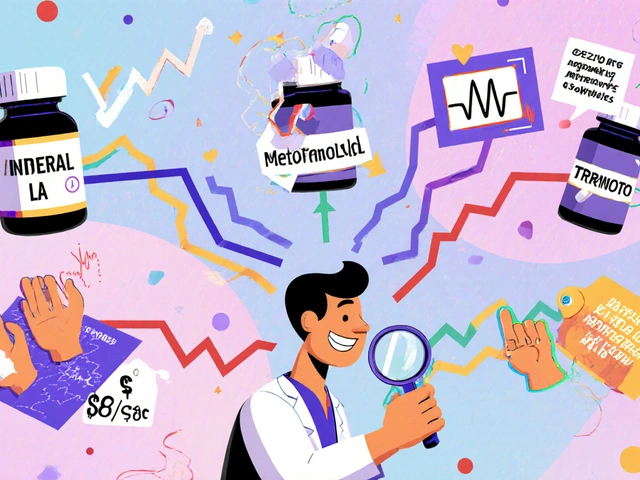PSA screening isn’t as simple as it seems
Every year, millions of men get a PSA blood test. It’s quick, cheap, and often offered during routine checkups. But here’s the truth: getting tested doesn’t automatically mean you’re protecting yourself. For every man whose cancer is caught early and saved, there are three or four others who get diagnosed with a cancer that would never have hurt them - and then face surgery, radiation, or other treatments that can wreck their quality of life. That’s the real controversy around PSA screening.
What PSA screening actually tells you
The PSA test measures a protein made by the prostate gland. High levels can mean cancer, but they can also mean a swollen prostate, an infection, or even riding a bike the day before. About 75% of men with PSA levels between 4.0 and 10.0 ng/mL turn out to have no cancer at all after a biopsy. And here’s the twist: 15% of men with aggressive prostate cancer have PSA levels below 4.0 - meaning the test misses some of the worst cases.
That’s why doctors now use age-based thresholds. A 45-year-old with a PSA of 2.5 ng/mL might need attention, while a 70-year-old with 6.5 ng/mL might be fine. But even these adjustments don’t fix the core problem: PSA doesn’t tell you if a cancer is dangerous or harmless. It just says something is happening in the prostate.
The numbers behind the debate
Two huge studies, one in Europe and one in the U.S., gave opposite answers. The European study found PSA screening cut prostate cancer deaths by 21%. The American study found no benefit at all. Why the difference? It comes down to how the tests were done and who got screened.
But here’s what both studies agree on: for every 1,000 men screened every year for 10 years, about 1 or 2 deaths from prostate cancer are prevented. Sounds good? Maybe - until you see the other side. In that same group, 100 to 120 men get false positives that lead to painful, risky biopsies. And 80 to 100 men are told they have cancer - cancer that would never have caused symptoms or shortened their life. That’s overdiagnosis. And it’s real.
According to the Cochrane Collaboration, between 17% and 50% of prostate cancers found through screening are overdiagnosed. That means tens of thousands of men every year in the U.S. alone are treated for something that didn’t need treatment. And treatment? It can mean permanent incontinence, impotence, bowel damage - life-altering side effects for a cancer that might never have mattered.

What happens after a high PSA?
For decades, the answer was: biopsy, then surgery or radiation. But that’s changing. Today, doctors are more likely to say: let’s wait.
Active surveillance is now standard for low-risk prostate cancer. Instead of rushing to cut or zap the prostate, men get regular PSA tests, MRIs, and occasional biopsies. If the cancer stays slow, they live normally. If it starts to grow, they treat it. The landmark ProtecT trial showed that after 10 years, survival rates were nearly identical between men who had surgery, radiation, or just watched. That’s huge. It means for many, doing nothing is the best thing to do.
And new tools are helping. Multiparametric MRI can now spot aggressive tumors before a biopsy. If the MRI looks clean, many men skip the biopsy entirely. The 4Kscore test - which looks at four different proteins in the blood - can tell you if you’re at low risk for aggressive cancer with 95% accuracy. These aren’t magic, but they’re better than PSA alone.
Shared decision-making isn’t a buzzword - it’s the only ethical way forward
Here’s the bottom line: no one should get a PSA test without knowing what it could mean - good and bad. That’s shared decision-making. It’s not just handing out a pamphlet. It’s a real conversation: What are your fears? What are your priorities? Are you okay with the chance of side effects to avoid a small risk of dying from cancer?
But here’s the problem: most men aren’t getting this conversation. A 2017 survey found only 60% of men who got tested were told about the risks. A Mayo Clinic study showed doctors spend just 3.7 minutes on PSA discussions during a checkup. That’s less time than it takes to order coffee.
Decision aids help. Tools like the Ottawa Personal Decision Guide or Mayo Clinic’s visual risk calculator show men: for every 1,000 men screened, 1 to 2 lives are saved, but 240 get unnecessary biopsies. Seeing that visually changes decisions. Studies show it cuts decisional conflict by 35%.
One man in his early 60s had a PSA of 4.7. He had a radical prostatectomy. Two years later, he was incontinent and couldn’t have sex. His cancer was low-grade. It never would’ve killed him. He didn’t know that. His doctor didn’t explain it.
Another man, also 62, heard the same PSA result. He asked questions. He used a decision aid. He chose active surveillance. Five years later, his cancer hasn’t changed. He’s still hiking, still working, still living.

Who should even be screened?
Not everyone needs PSA testing. The U.S. Preventive Services Task Force says men 55 to 69 should consider it - but only after a discussion. For men under 55 or over 70, the risks usually outweigh the benefits.
But race and family history matter. African American men are more than twice as likely to die from prostate cancer as white men. They also get diagnosed younger. Yet, they’re 23% less likely to have a shared decision-making talk before screening. That’s a gap that needs fixing.
Men with a father or brother who had prostate cancer before 65 are at higher risk. A baseline PSA at age 45 can help. If it’s under 1.0 ng/mL, your risk is very low. You might not need another test until 55. That’s risk-stratified screening - and it’s the future.
What’s next for PSA screening?
The old PSA test is being replaced - slowly. New tests like IsoPSA claim 92% accuracy in spotting aggressive cancer, compared to just 25% for the standard test. AI tools are being trained to predict prostate cancer risk from routine blood work, cutting unnecessary tests by 30%.
But here’s what won’t change: until we have a perfect test that tells us exactly which cancers will kill and which won’t, the most important tool we have is the conversation.
Doctors can’t fix this alone. Patients need to ask: What happens if my PSA is high? What if it’s normal? What are my options? What are the risks of doing nothing?
And if your doctor doesn’t bring this up - ask. You have the right to know what you’re signing up for.
What you can do today
- If you’re 55 to 69: Don’t accept PSA screening without a discussion. Ask for a decision aid.
- If you’re under 55 or over 70: Unless you’re at high risk, screening likely won’t help you.
- If you’re African American or have a family history: Talk to your doctor about starting earlier - but still insist on shared decision-making.
- If you’ve already had a high PSA: Ask about MRI and active surveillance before jumping to biopsy or surgery.
- If you’re unsure: Use free tools like the Mayo Clinic or Prostate Cancer Foundation decision aids. They’re designed for real people, not doctors.
PSA screening isn’t a yes-or-no question. It’s a personal choice - and you deserve to make it with your eyes open.
Is PSA screening still recommended?
Yes - but only for men aged 55 to 69, and only after a discussion about the risks and benefits. The U.S. Preventive Services Task Force gives it a Grade C recommendation, meaning the benefit is small and should be weighed carefully. For men under 55 or over 70, routine screening is not recommended unless there’s a strong family history or other risk factors.
What are the main risks of PSA screening?
The biggest risks are false positives, unnecessary biopsies, overdiagnosis, and overtreatment. About 75% of men with elevated PSA levels don’t have cancer, but they still get biopsies - which carry risks of infection and bleeding. And for every 1,000 men screened over 10 years, 80 to 100 will be diagnosed with cancer that would never have caused harm - yet many will still get surgery or radiation, leading to side effects like incontinence and impotence.
Can PSA screening save lives?
Yes - but rarely. Studies show that for every 1,000 men screened annually for 10 years, only 1 to 2 prostate cancer deaths are prevented. That’s a small benefit, especially when weighed against the high rate of overdiagnosis. The key is catching aggressive cancers early - but PSA alone can’t reliably tell which cancers are dangerous.
What’s better than PSA screening?
No single test is perfect, but combining tools improves accuracy. Multiparametric MRI before biopsy reduces unnecessary procedures by 27%. The 4Kscore test and IsoPSA offer better specificity than traditional PSA. Genomic tests like Oncotype DX can help determine if a diagnosed cancer is likely to spread. But the best tool right now is shared decision-making - using these tests wisely, based on individual risk and preference.
Why do some doctors still push PSA screening?
Some doctors still recommend it out of habit, fear of missing cancer, or pressure from patients who believe screening is always good. Others may not be trained in shared decision-making or lack time to have the full conversation. But guidelines from the American Cancer Society, American Urological Association, and others now clearly state that screening without informed discussion is outdated and potentially harmful.
What if I don’t want to get screened?
That’s a valid choice. Many men choose not to get screened after learning the risks. You won’t be judged. The goal isn’t to get everyone tested - it’s to make sure every test is intentional. If you’re healthy, have no symptoms, and don’t have a strong family history, avoiding screening may be the safest option.
How do I know if I’m at high risk?
You’re at higher risk if you’re African American, have a father or brother diagnosed with prostate cancer before age 65, or have a genetic mutation like BRCA2. Baseline PSA at age 45 can help assess risk. If it’s under 1.0 ng/mL, your risk is very low. If it’s higher, you may benefit from more frequent monitoring - but always with shared decision-making.
Can active surveillance really work?
Yes. Studies like ProtecT show that for low-risk prostate cancer, active surveillance has the same 10-year survival rate as surgery or radiation - 99%. Most men on surveillance never need treatment. Those who do usually catch progression early. It’s not for everyone, but for many, it’s the best way to avoid unnecessary harm.



November 25, 2025 AT 01:04 AM
I got my PSA checked last year after my dad had it done. Turned out fine but I didn't even know what the risks were until I read this. Seriously, doctors need to stop treating this like a routine blood draw. It's not.